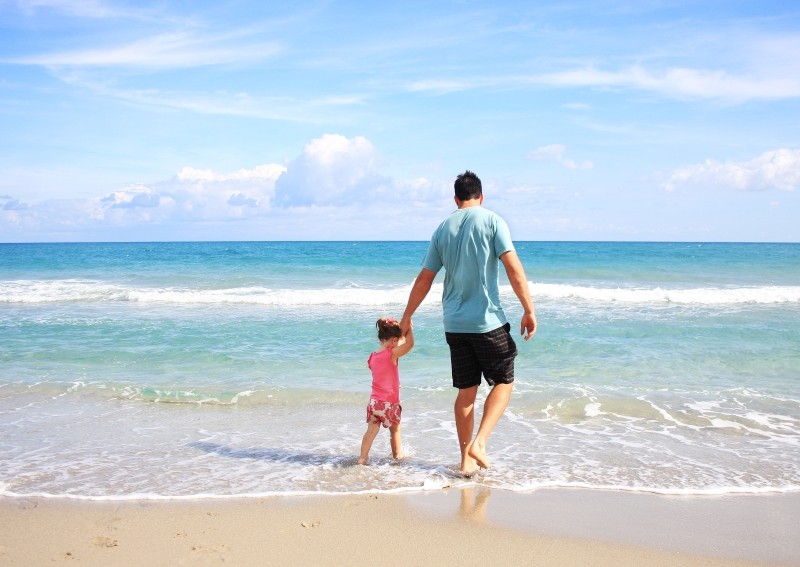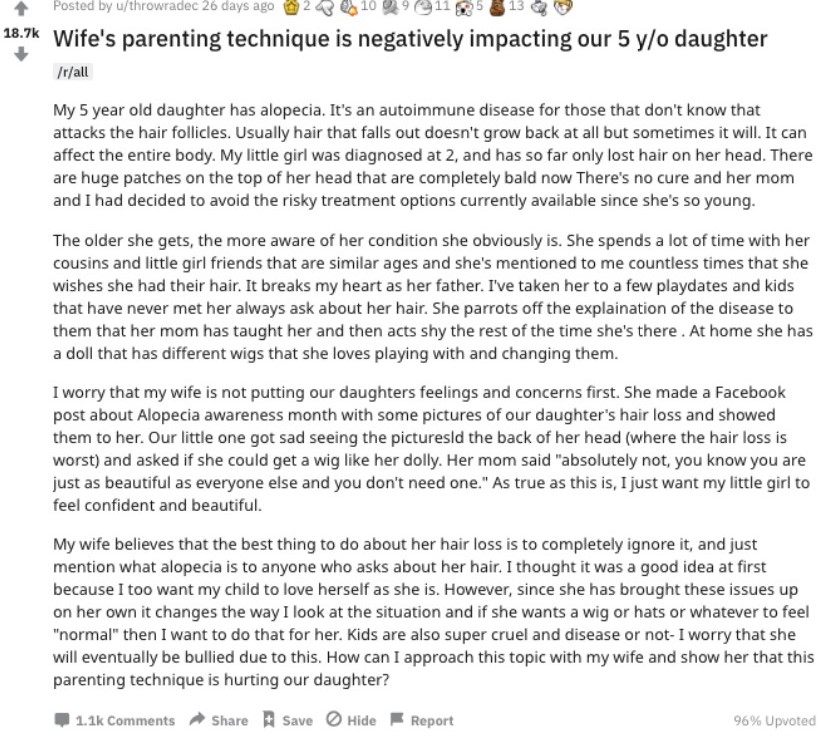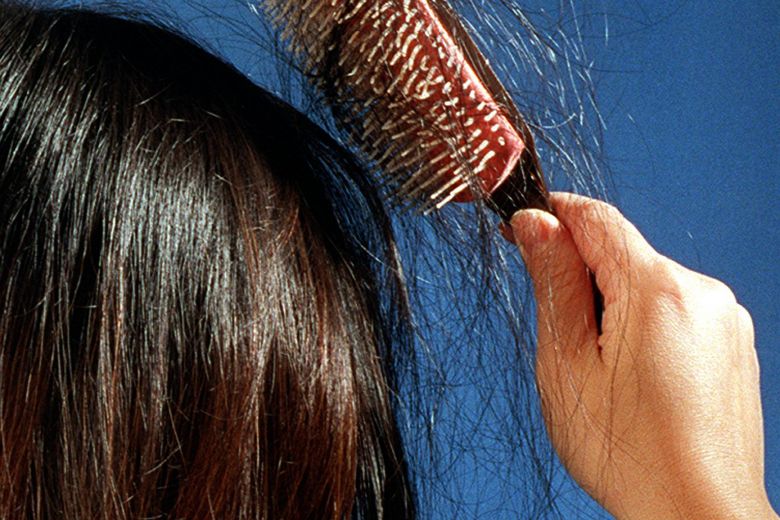'I just want my little girl to feel confident and beautiful': Dad worries how hair loss disease is affecting his 5-year-old daughter


While all parents want the best for their children, everyone is different and the way they bring up their kids differs.
One man has discovered he is unable to accept how his wife is parenting their 5-year-old daughter and took to Reddit (as u/throwradec) to share his woes and to seek advice.
The father shares that his wife is “not putting [their daughter’s] feelings and concerns first”.

“There are huge patches on the top of her head that are completely bald now,” he says while stating that there is “no cure”.
Although there are available treatment options, he said he and his wife consider them “risky” as their daughter is still very young.
According to him, his daughter has become more aware of her condition and wishes to have hair just like other little girls her age.
At home, the 5-year-old has a favourite doll that has different wigs and she loves being able to switch the wigs around.
“She spends a lot of time with her cousins and little girl friends that are [of] similar ages and she’s mentioned to me countless times that she wishes she had their hair,” the dad wrote.
The dad also states that other children who meet his daughter for the first time during playdates would often ask about her hair.
[[nid:460938]]
In response, his daughter would simply explain the disease as it is, like what her mother had taught her. He says she then “acts shy” for the rest of the time spent there.
“My wife believes that the best thing to do about her hair loss is to completely ignore it, and just mention what alopecia is to anyone who asks about her hair,” he adds.
His wife would also not allow their daughter to get a wig like her dolly, despite her daughter being concerned about the hair loss. His wife’s rationale? Their daughter is “just as beautiful as anyone else”, thus does not need a wig.
While the dad shared his wife’s sentiments in teaching their child “to love who they are”, his perspective changed after their daughter expressed her concerns.
“If she wants a wig or hats or whatever to feel ‘normal’ then I want to do that for her (sic),” he wrote. “I just want my little girl to feel confident and beautiful.”
ALSO READ: Having hair loss or thinning hair? Here's what to do about it

Hair loss, or alopecia, happens not only in adults but in children as well.
It is an autoimmune disease whereby the immune system attacks the follicles from which hair grows. The disease may occur due to congenital or acquired conditions.
But whether it is having thinning hair or distinct bald spots, hair loss can be an unnerving experience.
Alopecia can present itself in different forms, which is dependent on the pattern of hair loss:
It typically presents itself as a circular patch with normal-appearing scalp skin. In some cases, it can further develop as hair loss in the eyebrows, eyelashes, and face, as well as other parts of the body.
The condition can also develop slowly and resurface years after being dormant. Children with alopecia areata may also become totally bald.
Doctors usually diagnose alopecia areata by examining the child’s scalp. They may remove a few hairs for examination under a microscope to see exclamation point hairs, yellow dots, and black dots.
Alopecia totalis involves the complete loss of all head hair—a more severe form of alopecia areata.
It may start as alopecia areata, with small patches of hair loss. Over time, these patches spread until the entire head becomes bald.
The most severe form of alopecia areata comes in the form of alopecia universalis, causing complete hair loss over the entire body.
The symptoms include hair loss in these areas: body hair, eyebrows, scalp hair, eyelashes and may occur on the pubic area and inside the nose.
While there is no cure for alopecia areata, there are some available treatments to kickstart the process of regrowing hair.
Here are some ways to slow down the disease and help regrow hair:
Available as an over-the-counter treatment, it can be applied twice daily to the scalp, eyebrows, and beard. It is said to be relatively safe and can take a year to see results.
It may be useful for people with limited alopecia areata.
With a suitable form of treatment, most children with alopecia areata will regrow their hair within a year.
However, due to the unpredictable nature of the condition, one may require taking to trial and error to find a suitable treatment. And for some, the hair loss may worsen even with treatment.
Before administering any medical product, one should always seek medical advice from a health professional.
Alternative therapies to treat the condition include:
However, it should be noted that these treatments have yet to be tested in clinical trials thus their effectiveness remain unknown.
And when it comes to taking supplements such as herbal or vitamin supplements, always be sure to speak to your health professional beforehand. The claims on the labels from such supplements may sometimes be inaccurate or misleading.
This article was first published in theAsianparent.